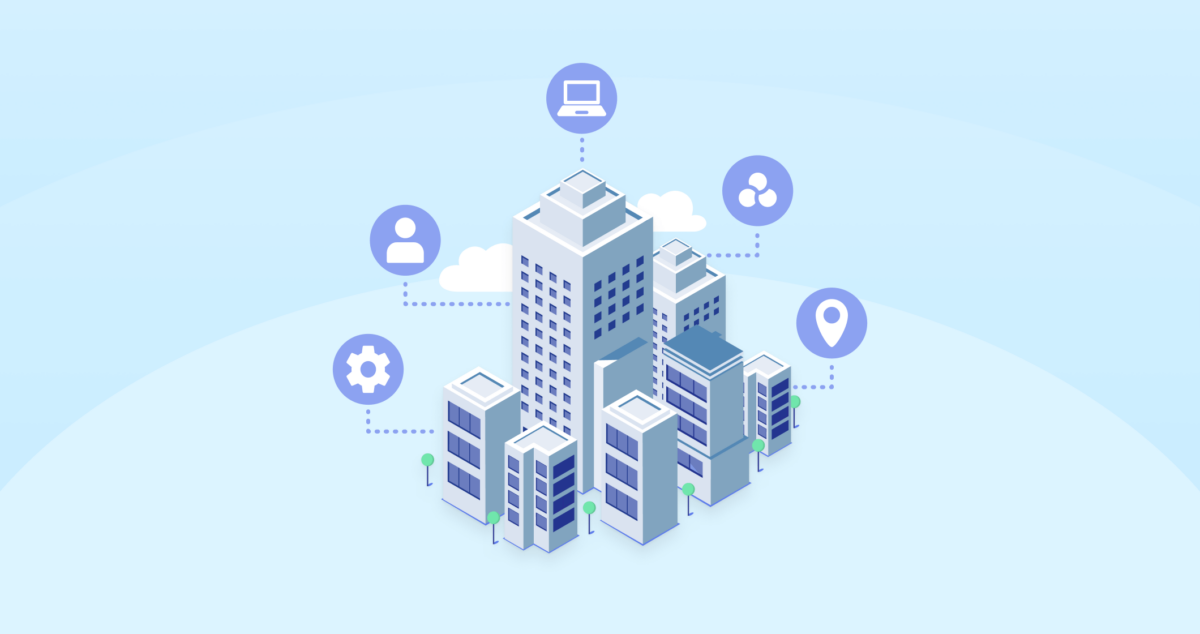
We’ve all acknowledged the role of COVID-19 in changing the nature of work. But none of us can predict the role that it — or other disruptors — will have on the workplace going forward. What we do know is that we need tools to ensure safety, flexibility and productivity going forward.
It’s clear technology that tracks employee health, safety, and compliance and helps companies put more emphasis on health and wellness will continue to be at the forefront of facilities management, as it has been for the last two years. But what about emerging tech that’s only beginning to go mainstream?
Below are five facilities management trends that will be crucial this year and beyond.
This may sound like old news since building sensors have been in use for years, and IoT hype has been around for a decade. Organizations using IoT technologies grew from 13% in 2014 to roughly 25% globally in 2019 alone, and IDC predicts IoT spending will exceed $1 trillion by 2025.
It would be a mistake to underestimate the sophistication – and the necessity – of new IoT-enabled building management systems (BMS), especially in light of advances in cloud technology and AI to help process this data, identifying patterns and anomalies, identifying operational issues and safety risks, and creating actionable insights to optimize building systems.
Sensors can give us enormous amounts of data, such as building occupancy, HVAC readings, lighting usage, air quality reading, and even temperature readings of rooms and occupants alike. But it’s our new analytical capabilities that will allow us to turn that information into things like social distancing protocols, office space plans, and tools for everything from smart parking to predictive maintenance.

From Slack to Zoom, ensuring employee communication and collaboration has been at the forefront of employers’ minds since the start of the pandemic. A lot has been made of the studies showing that around two-thirds of workers want to maintain hybrid work after the pandemic, and one-third would be willing to quit their jobs to find this flexibility.
But it’s also worth noting that similar surveys have found that only 13% of workers would choose to work from home exclusively, and 87% of employees say the office is important for collaborating with team members and building relationships. So, while real estate usage will continue to change, companies would be wise to invest in technology for on-site collaboration as well. These can include:
Centralizing and simplifying data can be challenging when efficiency tools are onboarded piecemeal, creating siloes of information. But two types of software can help manage these needs:
computerized maintenance management systems (CMMS) and computer-aided facility management (CAFM) software.
CMMS lets organizations view all of their inventory and maintenance information in one place. It helps keep track of physical assets and allows managers to view information on maintenance needs, cost of upkeep, and depreciation, as well as maintain compliance by generating usage and safety reports and schedule preventative maintenance.
CAFM is a tool with broader benefits because the software can monitor the usage of all assets, from machinery to space. Machine learning features help facility managers analyze entire facilities, including the maintenance information in a CMMS. It provides information on the usage and expenses of critical assets to optimize their utilization.

From programs that automate basic administrative work to robotic process automation (RPA), we can expect to see software perform high-volume, repetitive, and even dangerous tasks in 2022 and beyond. The addition of AI to this technology allows for minimal human intervention when collecting and analyzing data and choosing whether or not to play a role in acting on it.
Gartner has projected that the hyper-automation market will top $600 billion in 2022. This will be of particular significance to companies struggling to fill positions in crucial industries such as manufacturing and construction. The goal of hyperautomation is improving work quality, speed, and enhancing decision-making processes, all for maximum efficiency.
Companies collect information across multiple platforms and applications, keeping it siloed in ways that prevent the integration of diverse data assets. But in 2022 and beyond, data fabric architectures will pull metadata from disparate legacy and otherwise siloed technologies and tap it for cutting-edge insights, including:
According to Gartner, this new way of accessing data can help re-engineer decision-making, cutting data management efforts by 70%.
Much of the facilities management trends we’ll see in 2022 and beyond involve data collection, aggregation, and the use of AI and machine learning tools to make the data useful in creating a safe, productive, and efficient workplace. While much of this has been underway for years, new capabilities are making tech tools more powerful than ever.
Sine's robust workplace management platforms help provide tools facilities managers need for enhancing guest experiences, decreasing energy costs, protecting assets, increasing compliance, and improving and overall life expectancy of their assets.